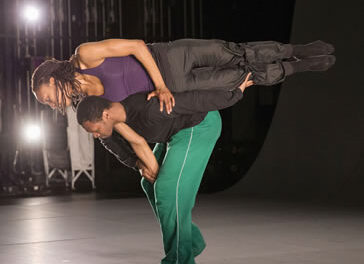It’s springtime in the mountains, and romance is in the air. The Hendersonville Symphony Orchestra celebrated by delivering a “Spring Romance” program that included works by Tchaikovsky, Mahler, Rachmaninoff and Howard Hanson. The audience almost filled the 1,000-seat Blue Ridge Community College Concert Hall.
The opening work was Tchaikovsky’s Romeo and Juliet Fantasy-Overture. How very Slavic is this depiction of Verona and the Veronese. Yet somehow we don’t mind that it doesn’t sound Italian; it certainly sounds appropriately emotional for the tale of the unfortunate young lovers. The Adagietto from Mahler’s Fifth Symphony followed – the fourth of five movements, it is an otherworldly meditation. A quiet slow piece of music is sometimes the most difficult to pull off. The musicians must hold on to a calmness, think expansively of the long arc of the narrative, and control gradual crescendos and diminuendos. The HSO did that.
During these first two works, with their lush chords and rhapsodic melodies, I found myself thinking about the marvel that is the Hendersonville Symphony Orchestra. Few cities that small boast orchestras with professional players of that caliber. Despite the minimal size of its string section (fewer than forty), the HSO does not sound thin. Clearly there is no back desk violinist “noodling” (making motions but not producing music). All are contributing their full power to making the pieces work. To these musicians, the HSO is not just a gig but a calling.
One of the points of pride of the HSO is its heavy attention to music education. The orchestra operates three training ensembles and each year also conducts a Young Artist Competition. Checks were presented to this year’s three winners at this concert. First Prize winner Ayano Annis performed the first movement of Rachmaninoff’s Piano Concerto No. 2 in C minor. This was the first time in her sixteen years that Ms. Annis had performed with orchestra. (In concerto competitions, the performers are accompanied by pianists playing reductions of the orchestral accompaniment. Only the winner gets a real orchestra.) I predict that this will not be the last time.
What a perfect fit into the mood of this Romantic evening! While Ms. Annis does not yet exert the power to balance an orchestra’s fortissimos, she showed confidence and control, a lovely tone, and intelligent shaping of phrases in the contemplative sections of the concerto. In one early passage, I suspect that a slight adrenalin rush caused her to speed up overly much, but competent accompaniment by Maestro Thomas Joiner brought the orchestra up to the soloist’s speed and the balance was not lost. The French horn work was exemplary in this piece.
A single symphony constituted the second half of the program. Howard Hanson’s Symphony No. 2, known as the “Romantic,” has thematic material that repeats in all three movements. In the first movement, there seems to be a battle against strident forces that try to suppress the beautiful theme as it gets organized. The second movement Andante shows that contemplation strengthens the power of the theme. The third movement seems to start with a depiction of children’s happy games. Towards the end of the movement, a serious fanfare leads into a final recapitulation of the theme, with drumbeat underscoring it and brass providing a countermelody. The beautiful theme has triumphed.
While this symphony is short by the standards of romanticism (barely thirty minutes), it contains a number of technical challenges that the HSO managed very well. Howard Hanson sometimes used brass and woodwind forces in a merciless fashion, and these players were up to the challenge.
Hanson wrote seven symphonies, all in a neo-romantic vein that was not in fashion in the mid-twentieth century. There has been a resurgence of interest in Hanson and others of his school, such as Roy Harris and David Diamond, and I would love to hear these quintessentially American symphonies on future programs. Perhaps having broken the ice with Hanson, we can hear Diamond next on an HSO program?











